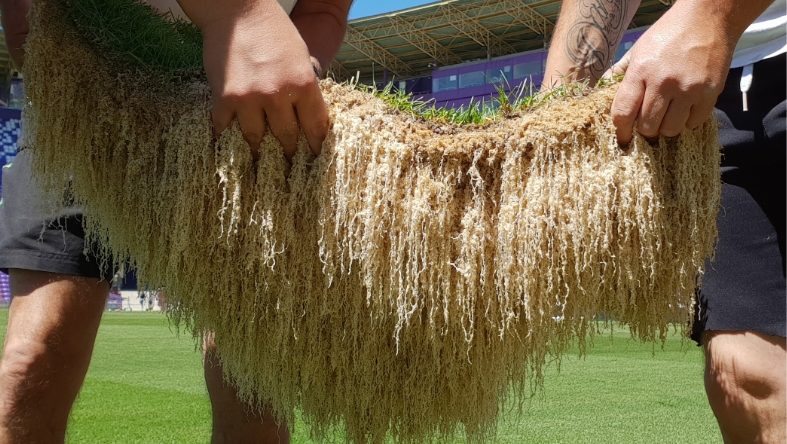To create a nutrition program we shoul have knowledge of the nutritional needs of species and varieties.
- Fertility of the soil.
- Release form of the fertilizer.
- Experiences of the lawn gardener.
Nitrogen
a) Determination of annual needs
Depending on:
-
Requirements of each species or variety.
-
Weather conditions (temperature, precipitation, months of active growth).
-
Soil conditions (mainly texture).
Annual needs must be adjusted using the following parameters:
- Quality of the turfgrass (10-20%).
- Use of the turfgrass (10-20%).
- Removal of clippings (10-20%).
- Irrigation frequency (10-20%).
- Rain (10-30%)
- Soil texture (10-30%)
b) Dates for adding nitrogen
The most important factor is the growth cycle of the lawn. Nitrogen should be applied when the turfgrass needs it.
c) Choosing the type of fertilizer
- Depending on personal preferences.
-
Depending on characteristics, costs, release time. In general slow-release fertilizers are used more with temperate climate species, sandy soils and areas that are fertilized only once or twice per year.
d) Determining the dose of nitrogen per application
Higher doses in warm-climate species are applied from late spring to early summer.
For temperate species, higher doses are given in early and late autumn and to a lesser extent in spring.
Water-soluble nitrogen fertilizers are applied at doses between 5 and 50 units of N/application.
Water insoluble nitrogen is applied at doses between 25 and 75 units of N/application.
e) Defining the annual fertilization program
Although we might have a programme in place on paper, it should be modified depending on the following factors:
- Turf density and colour.
Colour.
Growth.
Stem density.
Experience of the gardener.
Analysis of tissues.
-
Occurrence of diseases. Soluble nitrogen sources exacerbate diseases such as Pythium or Rhizoctonia. To combat rust more nitrogen should be added.
- Weather conditions.
- Overseeding in an established lawn.
Phosphorus and potassium
Phosphorus (P205)
Its in-depth contribution will depend on soil analysis. For sandy substrates, apply 100 units at 5 cm depth before planting.
Apply at least 50 units annually.
In sports turf, it may favour the implementation of Poa annua, which limits its use to nutritional needs. This is not the case of warm-climate species.
Fertilization will be based on soil analysis results. In case of high pH additional applications must be made to compensate for soil retrogradation.
An annual application is sufficient, preferably in spring, especially for warm-climate species.
Potassium (K20)
The applications will be based on soil test results. When the soil is very sandy, the amounts required are as follows:
- For nitrogen additions from 50 to 150 units/year, apply a balance of 1:1.5 N:K2O.
- For nitrogen fertilization of 150 to 250 units/year, apply a balance of 1:1 of N:K2O.
-
When the nitrogen fertilization exceeds 250 units per year, use a balance of 1:0.5 N:K2O up to 350 units of K2O annually, except in tropical areas where up to 500 units K2O/year could be applied.
Applications are divided in three different periods:
-
Mid-spring with an application of approx. 50 units of K2O. In late spring anywhere from 12 to 25 units can be applied in sandy soils and in the case of warm climate species.
-
The third or second application (temperate species) will be in mid-fall and will be 25 to 50 units.
Fertilization program for intensive use using a 16.5.12 balance fertilizer in each kg of fertilizer application and month
The varieties and mixtures recommended with lowest nutrition needs are:

